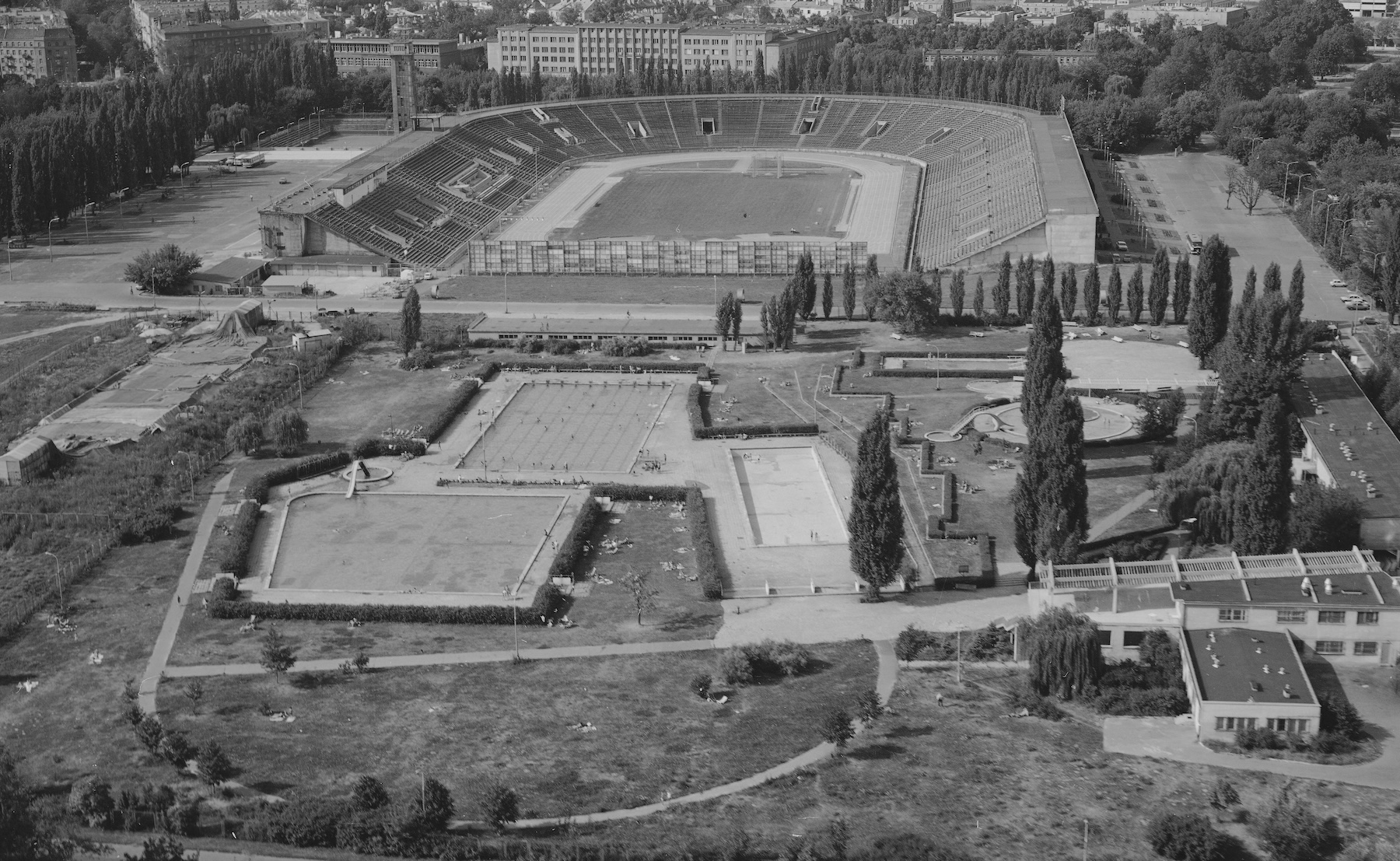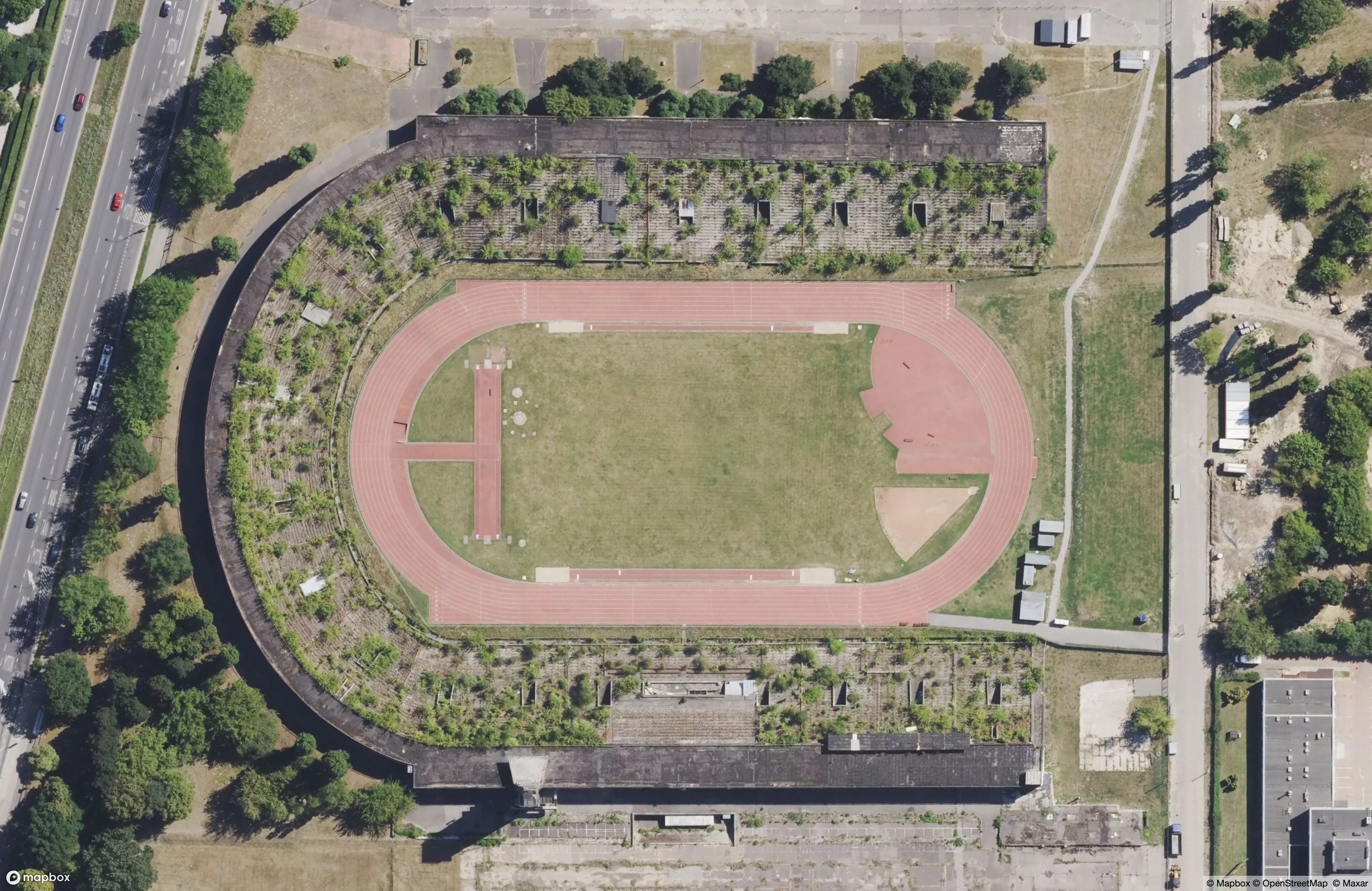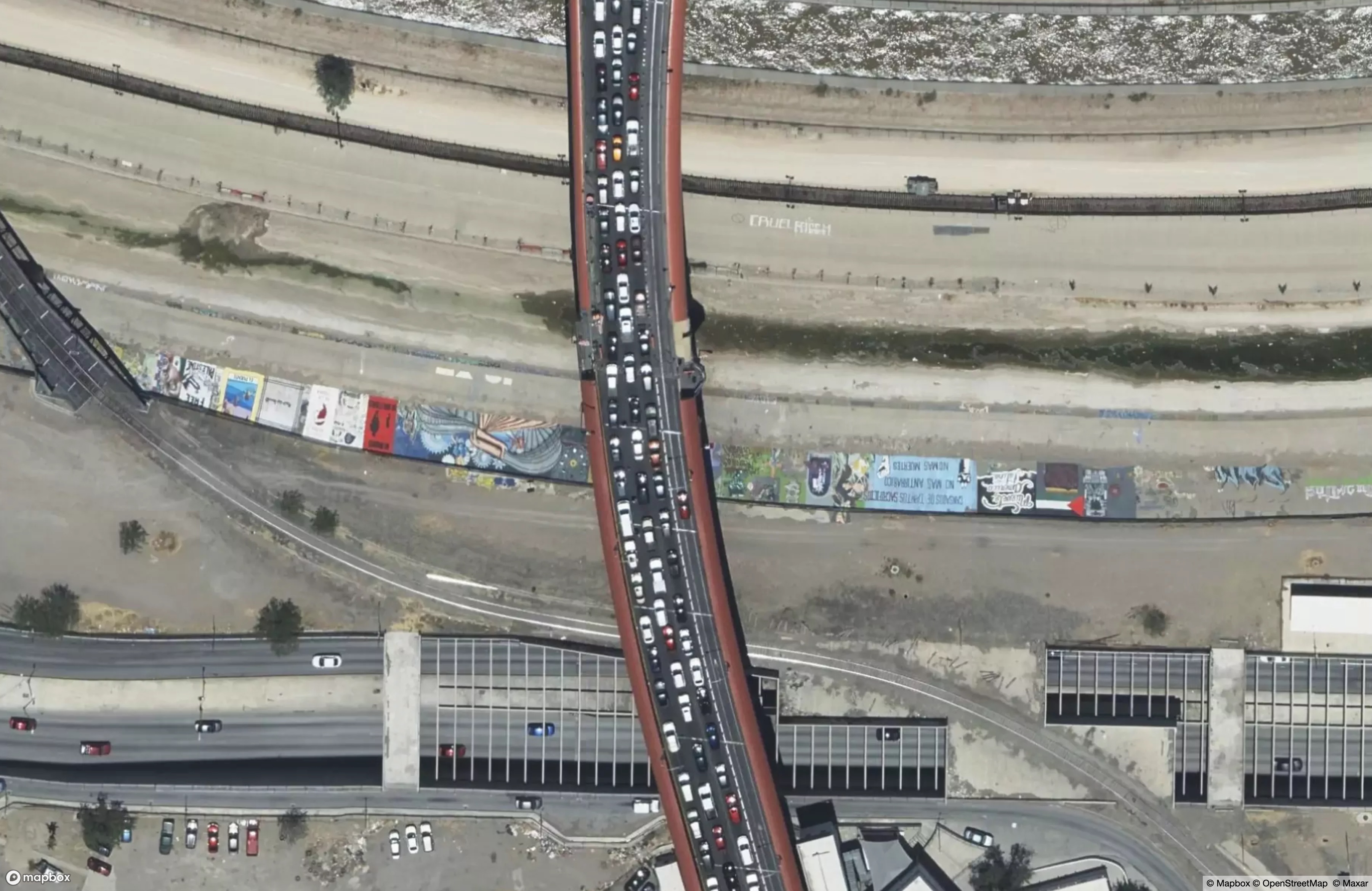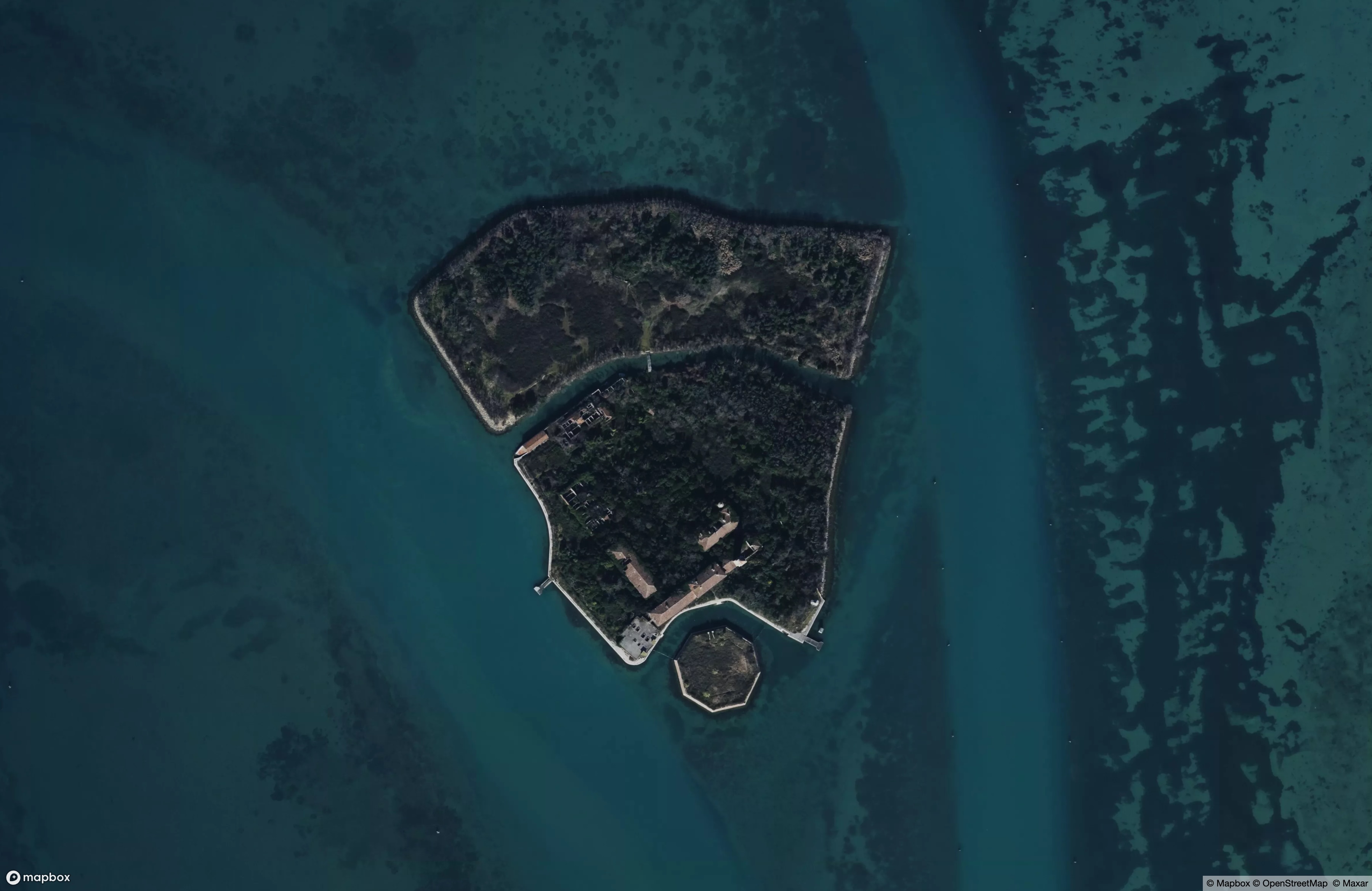Warsaw, Poland
Skra Stadium, built in its current form after WWII, hosted 35,000 spectators for soccer, track and field, and motorcycle races. In 1969, it was the first facility in Poland to be equipped with a rubberized synthetic track surface, called “Tartan” by its manufacturer 3M.
 Skra stadium in 1984, photo by Lech Zielaskowski
Skra stadium in 1984, photo by Lech Zielaskowski
After the fall of Communism, the club that maintained the stadium was unable to continue funding the upkeep, and after several attempts to secure sponsorship the stadium was closed in 2019. In the past few years, trees have begun to sprout in the grandstands. However, the track surface itself is so durable that it is still used as a training facility by the Warsaw Athletics Academy.

The longevity of the tartan surface was actually problematic for 3M, since almost no maintenance or replacement was required over decades. The company allowed its patents to expire in the 1970s, and tracks like those at Skra continue on in active use, despite nature’s reclamations all around.
Ciudad Juarez, Mexico

The line of cars on the Paso del Norte International bridge await their turn to enter El Paso. They cross above a collection of art installations - from murals to casual tags - lining the the concrete retaining wall on the Mexican side of the Rio Grande.
One of the paintings tucked away under the bridge is of U.S. Army veteran Laura Meza. Meza was brought North as a child, raised in Maryland, ultimately served in Iraq, and was later deported to Costa Rica where she now lives, separated from her family. Her portrait is one of thirty by Lizbeth de la Cruz Santana and collaborators, whose Paso del Norte mural project aims to bring attention to the stories of deportees of all backgrounds.
Venice, Italy

The Island of Poveglia stood abandoned for decades in the broad lagoon surrounding the city of Venice and its satellites, its hospital and church structures falling into ruins. But recently, city residents have begun to rehabilitate the island, turning it into a park and refuge to contrast with the industrial tourism that dominates land use everywhere else nearby.
The locals are hoping that persistent rumors of hauntings on the island don’t turn Poveglia into a paranormal tourism destination, but rather a spot for quiet and contemplation.